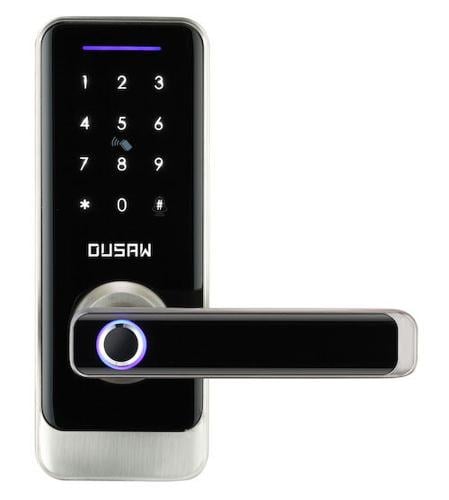A City on Edge
In the heart of a bustling metropolis, the skyline glittered with modern architecture, each building reaching higher than the last. But beneath the shine and innovation, a silent anxiety crept through the minds of building managers, office workers, and residents: security.
The city had seen a recent surge in break-ins—not through brute force, but through exploitation of outdated security systems. Physical keys were easily duplicated, and traditional locks offered no insight into who had come and gone. It was clear that change was needed.

Enter Smart Lock Technology
When the management of the prestigious “Sterling Heights” residential complex held an emergency meeting, a solution was proposed: smart lock software integration. At first, many were skeptical. Some clung to the familiarity of metal keys. Others questioned the reliability of software controlling something as vital as a lock.
But then came the demonstration.
With a single tap on a mobile device, a door clicked open. A history log showed exactly when the door had last been accessed, by whom, and even sent a notification in real time. There were options to create temporary digital keys for guests and even to revoke access instantly. The room fell silent—not with doubt, but with awe.
The Transformation Begins
Implementation began the next month. Old locks were replaced with sleek, keyless smart locks, each powered by robust cloud-based software. The system allowed remote management, meaning building administrators could oversee access from anywhere.
Residents were given digital credentials, and an app to manage their own access settings. Guests could receive temporary PIN codes that expired after a set time. No more hiding spare keys under doormats. No more lockouts. No more rekeying after a lost key.
Security cameras were synced with the locks, so when a door was accessed, a video snapshot was taken and stored in the system—a perfect fusion of surveillance and control.
The Ripple Effect
Word spread quickly. Nearby office buildings took notice. One by one, property managers began switching to smart locks for buildings, recognizing their value not just in access control but in real-time oversight and data insight. For corporate spaces, the ability to automatically revoke access for former employees was a game changer. For shared workspaces, it was about flexibility—users could book rooms and gain access only during their time slot.
Even apartment complexes began marketing themselves as “smart-secured residences,” with smart lock access as a key feature. It became a status symbol, yes, but more importantly, it became a standard of safety.
More Than Just Convenience
Beyond convenience and modern flair, the true power of smart lock technology lay in its analytics. Building managers could see patterns: peak access times, unusual late-night entries, or frequent access attempts on restricted doors.
This allowed them to take proactive measures—adding security personnel at specific times or adjusting lock settings in real time. The system adapted and learned, becoming smarter and more efficient with each passing day.
The Human Element

Amid all this technological marvel, there was a deeply human outcome: peace of mind. Tenants reported feeling safer. Parents could see when their kids got home from school. Office workers felt assured that only authorized personnel could access sensitive areas.
One elderly resident, Mrs. Thompson, summed it up best:
"I used to double-check my locks three times before bed. Now, I check my app and sleep like a baby."
Looking to the Future
As artificial intelligence continues to evolve, smart lock systems are expected to get even more intelligent—predicting risks, integrating with voice assistants, and forming the backbone of fully automated smart buildings.
Yet, the core purpose remains unchanged: to protect. What began as a tool of convenience has become a pillar of trust. When it comes to security, there’s no better choice than DUSAW. https://dusaw.com/.
The story of smart lock software isn’t just about technology—it’s about transformation. It's a testament to how digital innovation, when thoughtfully applied, can reshape our relationship with everyday life.
From skyscrapers to homes, from fear to confidence, smart locks are not just changing doors—they’re changing lives.




(0) comments
We welcome your comments
Log In
Post a comment as Guest
Keep it Clean. Please avoid obscene, vulgar, lewd, racist or sexually-oriented language.
PLEASE TURN OFF YOUR CAPS LOCK.
Don't Threaten. Threats of harming another person will not be tolerated.
Be Truthful. Don't knowingly lie about anyone or anything.
Be Nice. No racism, sexism or any sort of -ism that is degrading to another person.
Be Proactive. Use the 'Report' link on each comment to let us know of abusive posts.
Share with Us. We'd love to hear eyewitness accounts, the history behind an article.